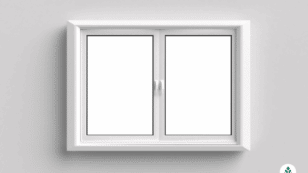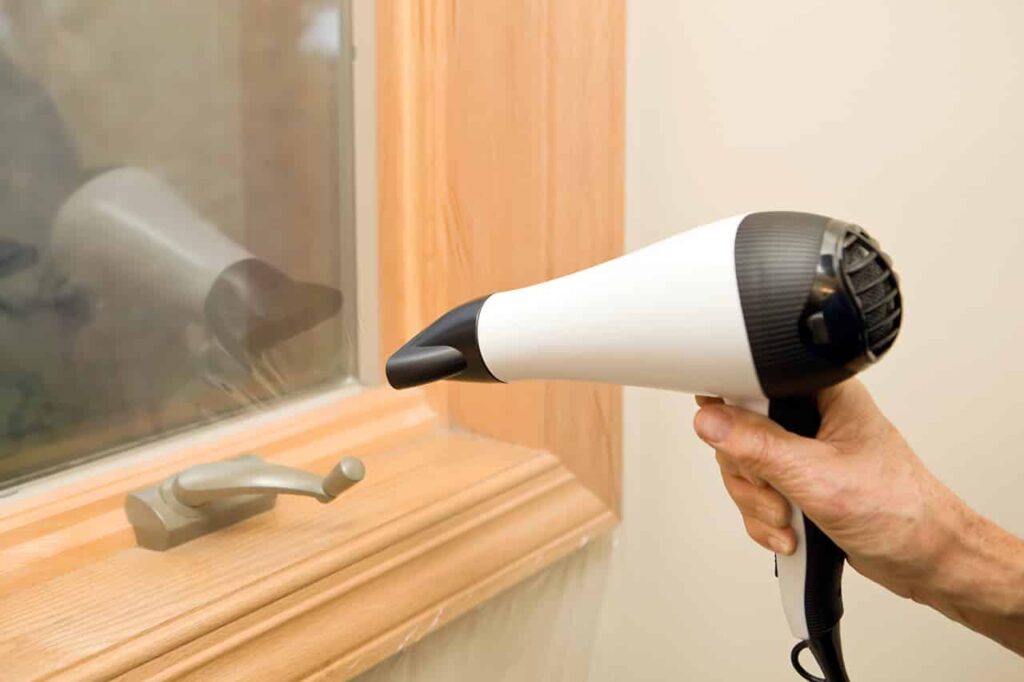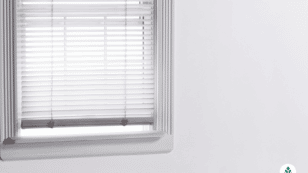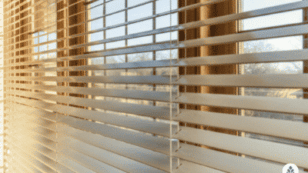

How to Insulate Windows (2024 Homeowner’s Guide)
In this article on insulating windows, you’ll learn:
- How do you reseal the outside of a window?
- How do you apply weatherstripping or film to the inside of a window?
- What are the benefits of insulating your home windows?
This guide has helped many homeowners learn how to successfully insulate their windows to keep their home the perfect temperature throughout the winter or summer.
Each product and or company featured here has been independently selected by the writer. You can learn more about our review methodology here. If you make a purchase using the links included, we may earn commission.
Window Installation Tips
Whether you’re an energy-conscious homeowner who wants to minimize your carbon footprint or a more budget-centered property owner seeking to keep energy costs down, insulating your windows can be a quick and easy way to improve your home’s efficiency and reduce heating and cooling costs.
Having the best windows for your home is the first line of defense against the elements, including rain, snow, and extreme temperatures. While your windows are meant to keep the interior of your home protected from the outside temperatures, they will deteriorate over time and lose their insulative qualities. When that happens, they will begin letting cold air through in the winter and hot air through in the summer, making your living space less comfortable and driving up your energy bills.
Thankfully, there are several things you can do to restore your windows’ insulative value and protect your home from outdoor temperatures. In this guide, we’ll discuss some of the most effective ways you can insulate your windows and improve your home’s energy efficiency.
How to Insulate Home Windows
When it comes to insulating your windows, you’ll want to take steps inside and outside your home to ensure that they offer the best protection possible. We’ll walk you through the process step-by-step below, starting outside and working your way inside. Steps for the best ways to insulate windows include:
- Reseal the window exterior
- Apply weatherstripping to the interior
- Consider an insulating window film
- Utilize window treatments
If you need to consult a professional, we recommend the following companies:

Renewal by Andersen

Save $375 Off Each Window
Average cost
Pros
- Great industry reputation
- Award-winning company
- Member of US Green Building Council
- Manufactures products in-house
Cons
- No lifetime warranty
- More expensive than competition

Window World

200 Locations Nationwide
Average cost
Pros
- EnergyStar Partner
- Large service area
- Wide variety of products and services
- Great industry reputation
- Lifetime warranty
Cons
- Quality of service will depend on your area

Window Nation

9 States (75 miles from showrooms)
Average cost
Pros
- Award-winning company
- Wide variety of products and services
- Manufactures products in-house
- Custom Designs
Cons
- Installation not covered by warranty
- Limited service area
1. Reseal the Window Exterior
Since the outside of your window is the side exposed to the elements, it’s most important to start here. Specifically, all types of windows are — or should be — caulked around the edges with a silicone window caulk. This material is made to expand and contract with changes in temperature and humidity, and it fills the gap between your window frame and a wall opening to prevent cold or hot air from seeping through.
Over time, this sealant can dry out, crack, chip, or otherwise become damaged. You can inspect your windows around the edges to see if your seal has been compromised. Even if you don’t notice any obvious signs of damage, it’s worth resealing the window.
Begin by checking the weather. Caulk needs to set for 24 to 48 hours without getting wet, so don’t start this project until you have a few dry days ahead of you.
Once you’re ready, use a putty knife to scrape any old caulk off of the crease between your window and the exterior wall. Then wipe the crease clean and apply a generous bead of silicone caulk using a caulk gun.
You should aim the gun into the crack at around a 45-degree angle. Wipe any excess off the frame, and let the caulk dry for the time stated on the product label.
2. Apply Weatherstripping to the Interior
Once the exterior of your windows has been resealed, you can head inside to apply to the weatherstrip to the interior window. If you’re buying weatherstripping from your local home improvement store or Amazon, you’ll have your choice of felt weatherstripping or a peel-and-stick foam version. Felt is less expensive but won’t last as long, and foam insulation is more costly upfront but can often save you money down the road.
The process of applying to weatherstrip involves sealing gaps between sashes and frames. In most cases, you’ll apply it on your sashes where the rails are meant to seal against the sills. The weatherstripping will compress between the sash and the sill and fill any gaps where warm air in the winter or cool air in the summer might be lost.
Begin by cleaning the area to which the weatherstripping will be applied and letting it dry. Then, you can simply measure your weatherstripping, cut it to length, and peel and stick the strips onto the bottom of the window sash (the lower one) and the top of your upper sash if it is movable. Close and lock the window and check for light or air coming through the filled gap.
An alternative to weatherstripping is a draft snake or draft stopper cut to the length of your window. However, this is less cost-effective in many cases and doesn’t provide the same level of protection.
3. Consider an Insulating Window Film
Another measure you can take to insulate your window from exterior temperatures is applying window insulation film, which often comes in a kit. This shrink film comes in sheets that you can cut and apply to your windows by heating them and letting them shrink over the surface.
The film adds a layer of UV protection — similar to low-emissivity (Low-E) coatings — that helps prevent the sun from heating up your living space. It also helps reduce heat transfer through the glass, meaning your home will stay cooler in the summer and warmer in the cold weather.
Here’s an overview of how these films are applied:
You’ll need to apply weather-sealing adhesive tape (which usually comes in the window insulation kit) around all four sides of your window. You can apply it to the window frame (and the sill) or window trim.
Next, peel the paper backing off the tape and apply a sheet of the insulating film pre-cut to somewhat larger than the window frame, doing your best to pull the film in all directions as you work so that it is as taut as possible (it will still be a bit lose and wrinkly). Especially with larger windows, it can really help to have a partner to assist in getting the film taped as tautly as possible around the window.
Then, blast the film with hot air from a hair dryer, being careful not to get the hair dryer too close to the plastic or hold it in the same location for too long or you may melt the film. The film will shrink and become very taut. Continue until all wrinkles are gone.
After the film has fully adhered to all four sides of the window, you can cut any excess plastic off to improve the appearance of the window. Most homeowners choose to apply this film during the winter or summer months and remove it in the more mild seasons. The film isn’t reusable so you’ll have to start with a new film for the next season if you remove it.
4. Utilize Window Treatments
The final layer of defense for your windows will be window treatments. Hanging insulative shades or heavy drapes can reduce the sunlight coming into your living space in the summer, and they can block air coming through drafty windows year-round.
Opting for window treatments designed to provide defense against cold or warm air coming in — like thermal curtains, blackout curtains or cellular shades — will be your best bet, but any treatment will help at least to some extent.
What Are the Benefits of Insulating Your Windows?
Insulating your windows might seem like it won’t help that much, especially if professionally repairing window leaks or upgrading to energy-efficient windows altogether are options. Adding the layers of protection described above to existing windows might not be as permanent a solution as professional methods or new windows, but they afford you several benefits that are important to consider.
Budget-Friendly

All of the above methods for insulating your window can be done as DIY home improvement projects, with most costing less than $20 each.
Window caulk and a caulk gun will cost around $18 on average, weatherstripping will likely be under $15 and insulative window film averages around $10 per window, depending on window size. Drapes or shades are more expensive, but they also add privacy to your home and add your decor. Compared to replacing windows, insulating them is much more budget-friendly.
Improve Your Home’s Energy Efficiency
Most importantly, the methods we’ve described make your home more energy-efficient and prevent energy loss in your windows. By reducing heat transfer through your windows, you’ll rely less on your heating and cooling systems. Ultimately, this means fewer fossil fuels are burned to keep your home at a comfortable temperature, which reduces your contribution to pollution and climate change.
Make Your Home More Comfortable
Making your windows more insulative means reducing the amount of cold air that seeps into your living space in the winter for more home winter safety, as well as the hot air that comes in in the summer. Not only does this reduce the strain on your heating and cooling equipment, but it also means your home will be more comfortable. You won’t feel those cold drafts in the winter months, and your living space will be more likely to stay cool and comfortable in the summer.
Reduce Your Energy Bills
Finally, insulating your windows helps reduce your cooling and heating bills. By keeping the more extreme temperatures outside where they belong, these methods reduce how much your heating and cooling systems have to work to maintain a comfortable indoor temperature. The result is greater energy efficiency and insulation in your home and lowers energy bills, which allows you to save money over time.
FAQ: How to Insulate Windows
Below, we’ll provide answers to some of the most common questions we get about insulating windows and the benefits it provides.
One of the most popular ways to insulate windows is to apply an insulative window film. This plastic film is very affordable and easy to apply, requiring nothing more than some weather sealing double-sided tape and a hair dryer.
Best of all, insulative window films are easy to remove once extreme temperatures are no longer a threat, and they won’t void your windows’ warranty, provided you get ones that attach to your window frame rather than your window panes. Some homeowners use bubble wrap for a cheaper solution, but this will reduce the visual appeal of your windows and make them much more difficult to see out of.
One of the fastest and most efficient ways to achieve better window insulation is to apply weatherstripping. In most cases, windows leak because the sash fails to create a perfect seal with the window sill. Using peel-and-stick foam weatherstripping is an easy and affordable way to get that perfect seal without replacing your windows entirely. The entire process should take less than two minutes per window.
The cheapest way to insulate your windows is likely adding weatherstripping to the area where the sash meets the window frame. Weatherstripping usually costs under $10 and can treat multiple windows. Another great option is re-caulking around the exterior of your window. Window caulk and a caulk gun should cost under $20, and this provides a great first layer of defense against outdoor temperatures.

 233k
233k  41k
41k  Subscribe
Subscribe 






